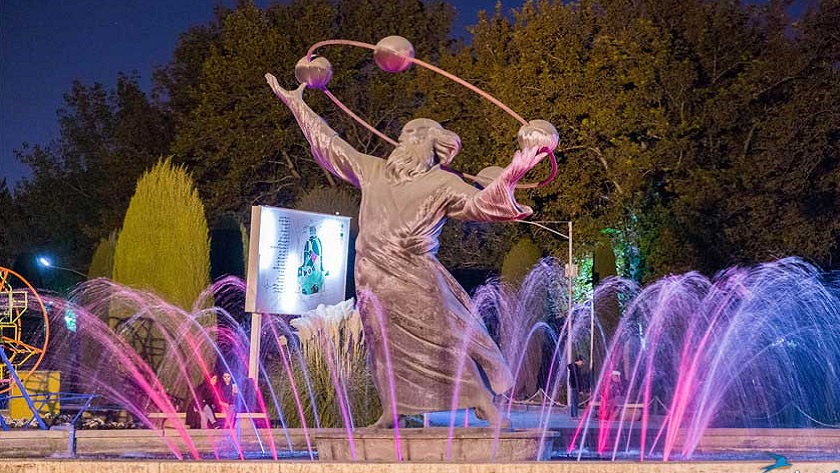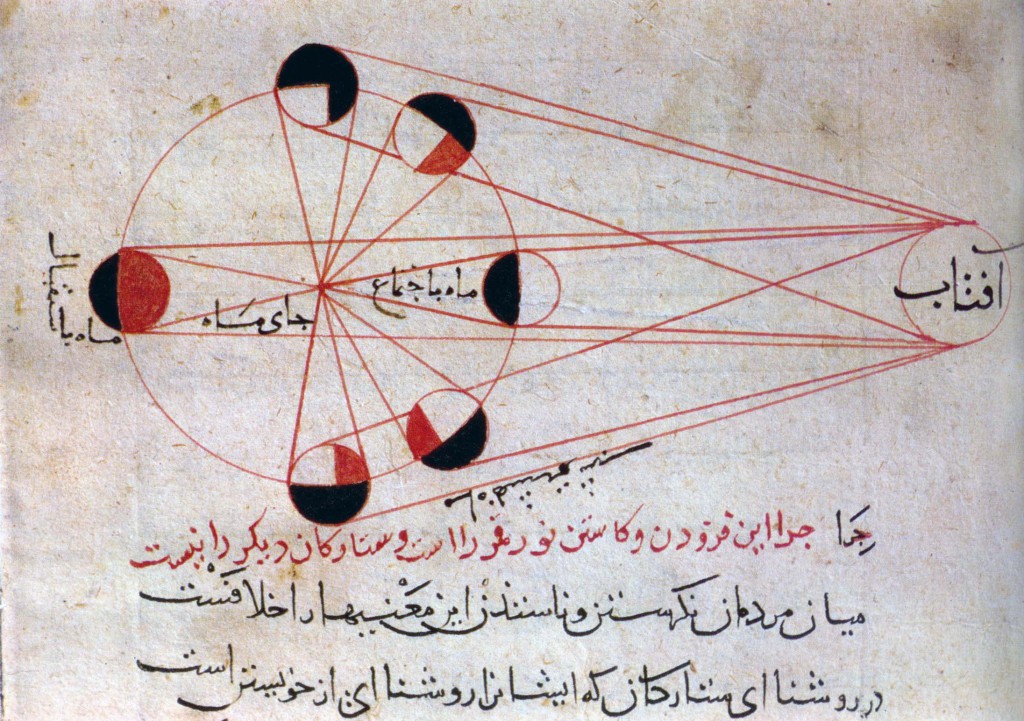Iran Press/ Iran News: Abu Rayhan Mohammad ibn Ahmad Al-Biruni known as Al-Biruni was a Persian scholar and polymath of the Khwarazm region, a part of ancient Persia and Greater Iran.
Biruni is regarded as one of the greatest scholars of the medieval Islamic era. He was well versed in physics, mathematics, astronomy, and natural sciences, and also distinguished himself as a historian, chronologist and linguist.
 Statue of Abu Reyhan Biruni in Tehran's Laleh Park
Statue of Abu Reyhan Biruni in Tehran's Laleh Park
Biography of Al-Biruni
Abu Rayhan al-Biruni was Born in Kath, Khwarezm in old Persia, he lived between 973 and 1048 AD. Khwarezm was the country of the Khwarezmian civilization and of several kingdoms. He lived both in Kath and in Jurjaniyya as he grew up and we know that he began studies at a very early age under the famous astronomer and mathematician Abu Nasr Mansur.
 Abu Reyhan Biruni was one of the most brilliant minds in Iranian history
Abu Reyhan Biruni was one of the most brilliant minds in Iranian history
Biruni left his hometown at a young age and he wandered around Persia and Uzbekistan. Then, after Mahmud of Ghazni conquered the emirate of Bukhara, he moved to Ghazni, a town in today's Afghanistan, which served as the capital of the Ghaznavid dynasty. In 1017, al-Biruni traveled to the Indian subcontinent, studying Indian science and conveying it to the Islamic world
 Al-Biruni greatly contributed to astronomy
Al-Biruni greatly contributed to astronomy
Al- Biruni's scientific achievements
Αl-Biruni was an astronomer, mathematician and philosopher, studying physics and natural sciences too. He was the first scientist able to obtain a simple formula for measuring the Earth’s radius. Moreover, he thought it is possible for the Earth to revolve around the Sun and developed the idea that geological eras succeed one another.
Abu Reyhan Biruni was contemporary of many writers and scholars, including the great scientist Avicenna, who continuously corresponded and discussed scientific issues with each other.
Related article: Razi; What Iran is known for
In fact, in his scientific body of work, he addresses almost all the sciences. He had excellent knowledge of ancient Greek and studied several works by ancient Greek scientists in their original forms; among them, there were Aristotle’s Physics, Metaphysics, De Caelo, and Meteorology, the works of Euclid and Archimedes, the Almagest of the mathematician and astronomer Ptolemy.
 Abu Reyhan Biruni greatly influenced European science
Abu Reyhan Biruni greatly influenced European science
Al-Biruni dealt with Earth in many of his works. He proposed a method to measure its radius, using trigonometric calculations. He is regarded as the 'father of geodesy' for his important contributions to that field, along with his significant contributions to geography.
Measuring the density of 18 precious metals and stones, measuring the diameter and circumference of the earth, a new way to design geographic maps, measuring the distance between cities, researching the beliefs and history of the people of India, and preparing a list of Zakaria Razi's books are some of his enduring works.
 Al-Biruni remains a prominent figure in Iranian science
Al-Biruni remains a prominent figure in Iranian science
Al-Biruni's impact on Europe: “When religious fanaticism swept medieval Europe, al-Biruni, as a forerunner of the Renaissance, was far in advance of the scientific thought than obtaining in Europe”. The use of experimental methods in science, which is one of Abu Reyhan al-Biruni's innovations, was proposed several centuries later in Europe by other scientists such as Francis Bacon and Rene Descartes and formed the foundation of today's scientific method.
 Abu Reyhan Biruni was a genius polymath
Abu Reyhan Biruni was a genius polymath
Abu Reyhan al-Biruni; Father of anthropology: The book known in English as ‘The Chronology of the Ancient Nations’ was written in Arabic by Abu Rayhan al-Biruni in the year 1000. It is a monumental compendium of the calendars and chronological systems of a very wide range of societies and cultures from the late antique Hellenistic world and the ancient and medieval Near East and Central Asia, including pagans, Christians, Muslims, Jews, and Zoroastrians, as well as other religious and ethnic groups.
 Al-Biruni statue; Persian Scholars pavilion in Vienna UN headquarters
Al-Biruni statue; Persian Scholars pavilion in Vienna UN headquarters
Al-Biruni's legacy
Biruni's scholarly legacy has inspired scientists and mathematicians for several centuries, and his name continues to command respect even today.
In 1975, the famous Tajik academician, Bobojon Gafurov, described Biruni in his Unesco Courier article as a universal genius who “was so far ahead of his time that his most brilliant discoveries seemed incomprehensible to most of the scholars of his days”. Also, George Sarton, the founder of the History of Science discipline, named the 11th century the Al Biruni Age.
Relate article: Avicenna; What Iran is known for
In June 2009 Iran donated a scholar pavilion to the United Nations Office in Vienna—placed in the central Memorial Plaza of the Vienna International Center. The Persian Scholars Pavilion at United Nations in Vienna, Austria is featuring the statues of four prominent Iranian figures; Avicenna, Biruni, Zakariya Razi, and Omar Khayyam.
Read More:
Remembering Al-Biruni
Ashkan Salehian

